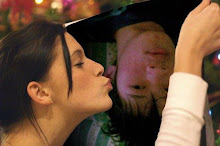The following advises are based on many years of experience. They are provided as a free service to our customers and visitors. However, Directron.com is not responsible for any damage as a result of following any of these advises. You are welcome to distribute these tips free to your friends and associates as long as it's not for commercial purposes.
No sound is heard from audio (music) CDs
Various conditions may cause this problem. To troubleshoot, check the following:
- Microsoft Volume Control or your mixer program mute options and volume sliders.
- Connect headphones to the stereo phone jack on your CD-ROM drive’s front panel; adjust the volume control settings on the drive. If there is sound from your headphones, check the CD audio cable connection from the CD-ROM drive to the audio card.
- Ensure the speakers are properly connected to the audio card’s output connector.
To troubleshoot, check the following:
- The audio card joystick port conflicts with another joystick port in the system. Disable the audio card joystick port, and use the system’s joystick port.
- The joystick drivers, MSJSTICK.DRV and VJOYD.VXD, may not be installed. Uninstall the joystick, then reinstall to load the drivers. The drivers should come with the driver CD or floppy diskette with your sound card.
A hardware conflict may cause the computer to hang or restart during the installation procedure. Check the following to resolve the conflict:
- A hardware conflict with another device in your system.
- Previously installed sound card hardware or software needs to be removed.
- The audio card is not seated in the slot properly.
- PCI bus mastering devices may be interfering with the operation of the audio card. Temporarily remove non-essential PCI bus mastering devices.
Hardware conflicts occur when two or more devices contend for the same resources. Conflicts between your audio card and another device may occur regarding the I/O address, IRQ line, or DMA channel:
- Right-click the My Computer icon on your desktop, and select Properties. The System Properties dialog appears.
- Click the Device Manager tab. In the Device Manager, a plus sign(+) represents an expandable list of items. A minus sign (-) represents an expanded list. A circled exclamation mark denotes a conflict.
- Double-click Sound, video, game controllers. A list of multimedia devices appears.
- Select your audio card.
- Choose the Propertis button.
- Click the Resources tab.
- Uncheck the Use automatic settings option.
- Change "Settings based on:" if alternate settings are available.
- Determine the conflict by reviewing the "Conflicting device list".
- Select the conflicting item in the "Resource Settings" list.
- Click the Change Settings button.
- Use the mouse to select a new setting.
- Select OK to close each of the properties windows, and restart your computer.
To manually configure your audio card for Windows 95/98:
- Click "Start" on the taskbar, and select Settings from the Start menu.
- Select Control Panel. The Control Panel group appears.
- Double-click the Add New Hardware icon. The Add New Hardware Wizard dialog appears.
- Select Next to continue.
- Choose Yes to have Windows search for new hardware, then select Next
- Select Next to continue.
- Select Finish, and follow the prompts to complete the new hardware installation.
To enable the "Audio insert notification" feature:
- Right-click the My Computer icon on your desktop, and select Properties. The System Properties dialog appears.
- Click the Device Manager tab. A list of devices appears.
- Double-click CD-ROM, and select your CD-ROM drive.
- Choose the Properties button. The CD-ROM drive properties dialog appears.
- Choose the Settings tab.
- Click the "Auto insert notification" option to enable.
- Select OK until all Properties dialogs are closed, and restart Windows for the changes to take effect.
Verify the following:
- Check the Microsoft Volume Control or the Audio Mixer Program mute options and volume sliders.
- Ensure the speakers are properly connected to the audio card’s output connector.
- Check the volume control and power connection of the speakers, if they are amplified. (Refer to the speakers documentation for detailed information).
- Ensure a hardware conflict does not exist between your audio card and another device in your system.
- PCI bus mastering devices may be interfering with the operation of the audio card. Temporarily remove non-essential PCI bus mastering devices. If the device is a display card, upgrade the display card drivers, or set the card to the default Windows VGA mode.
Static sounds are heard in wave files
Check to see if the static sounds are heard in all wave files. If the difficulty occurs only with certain games, refer to the software manufacturer’s documentation. To troubleshoot static sounds heard in all wave files:
- Try different resource settings for the audio card, or set the card to use low DMA.
- Move the audio card to another PCI slot. Feedback from the power supply or another device may be responsible.
If you find this article useful, please create a link to it from your website or tell a friend about it. If you have any comments or suggestions about this article, please email information@directron.us


Tidak ada komentar:
Posting Komentar